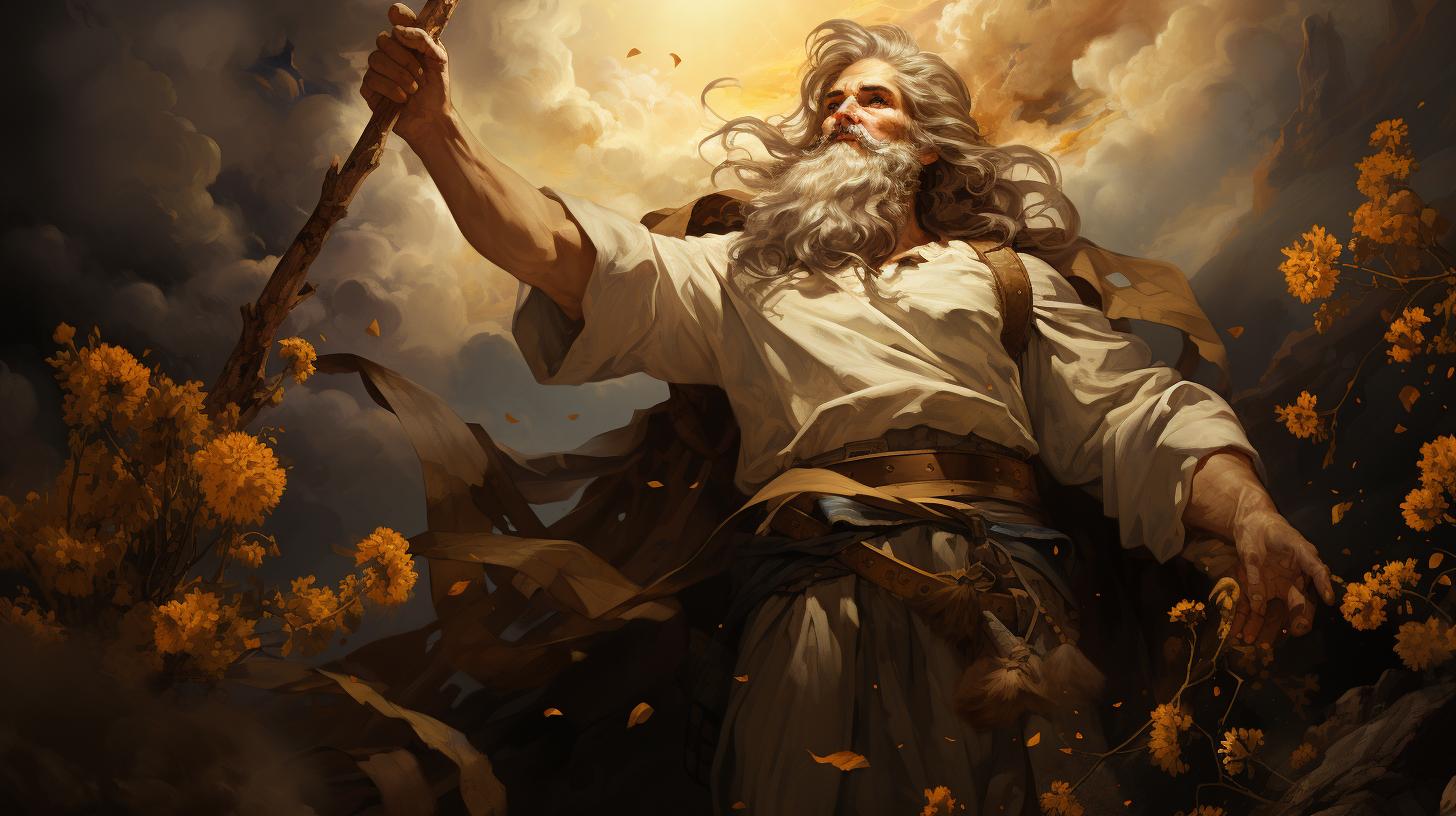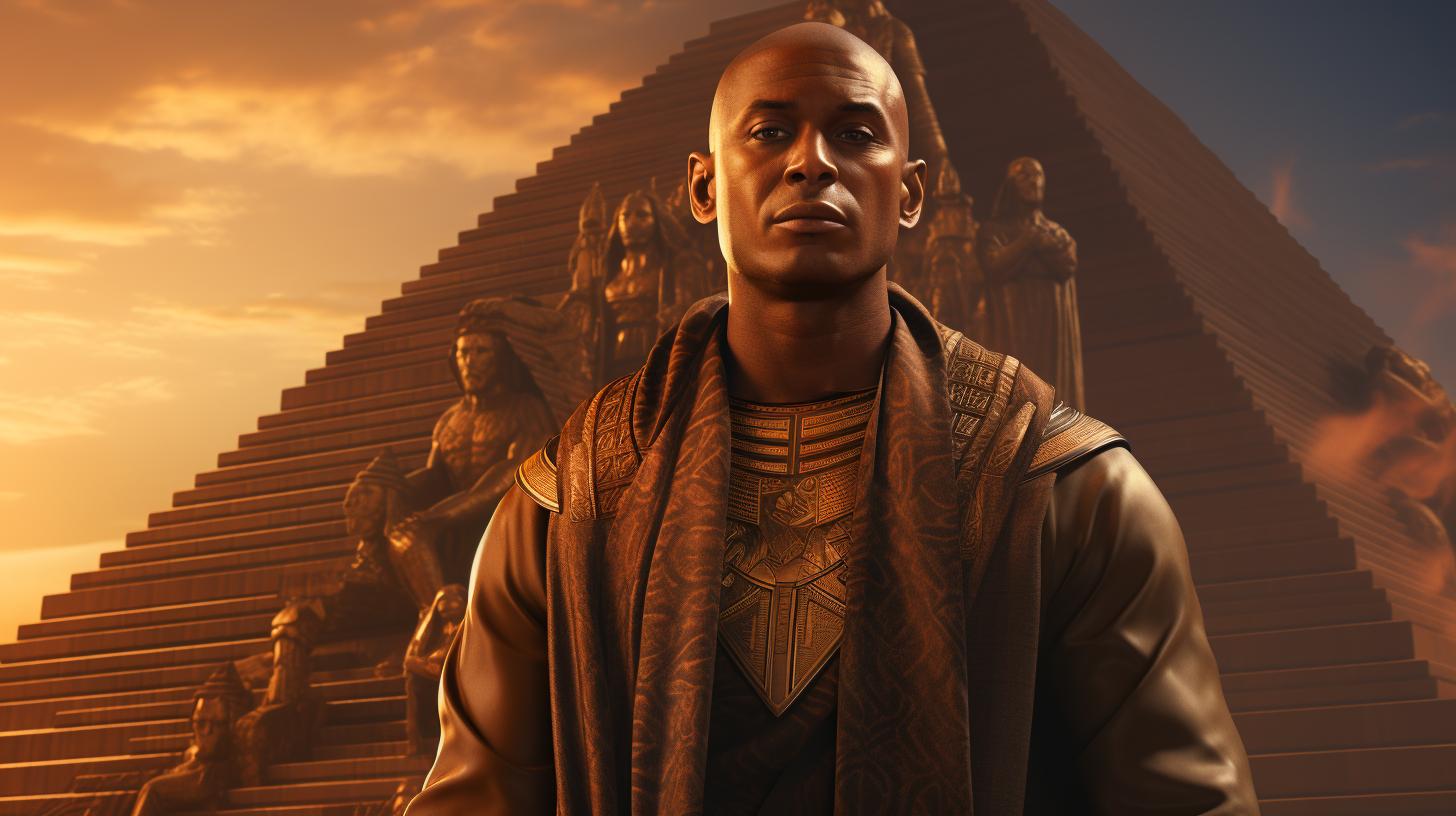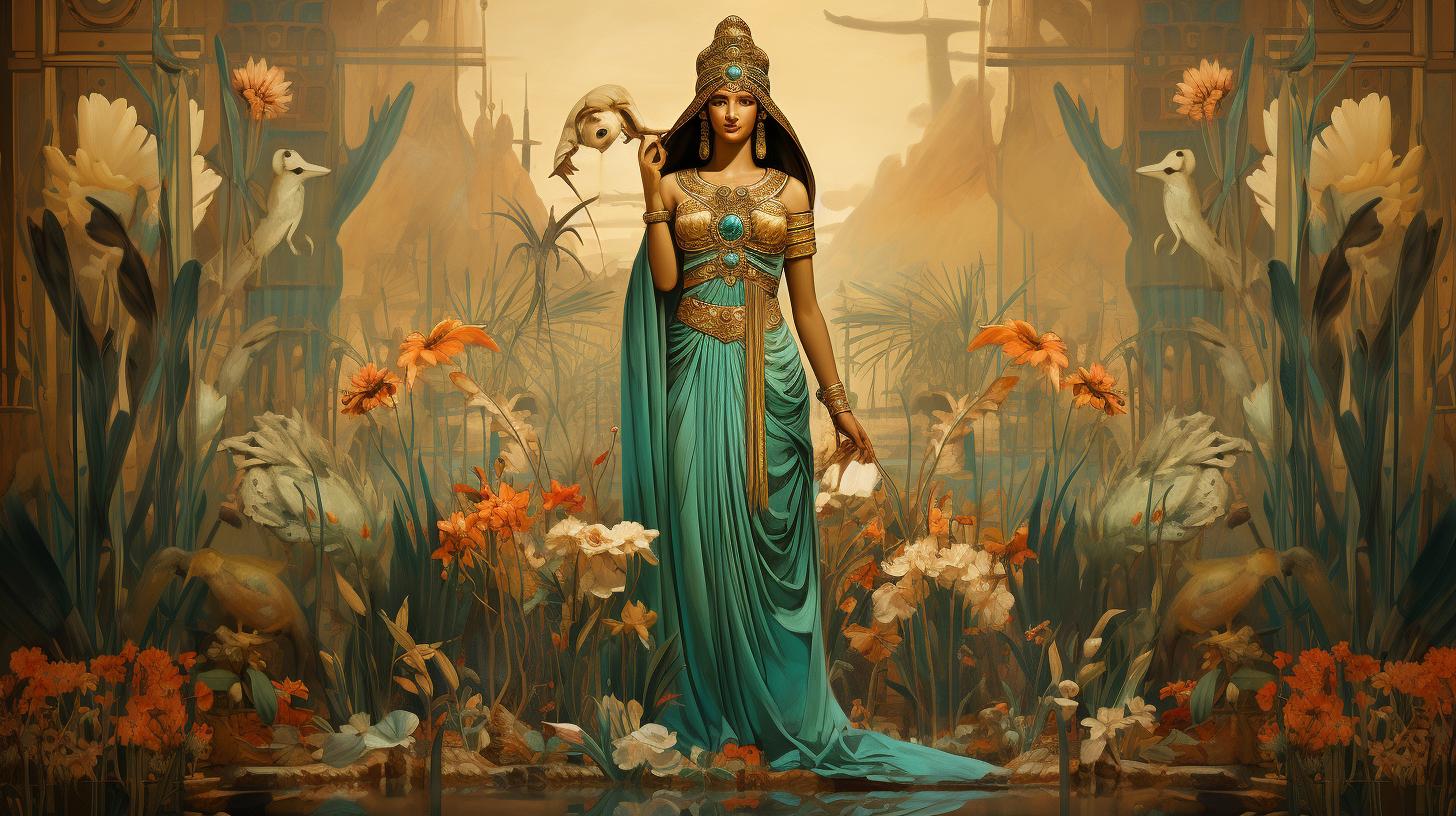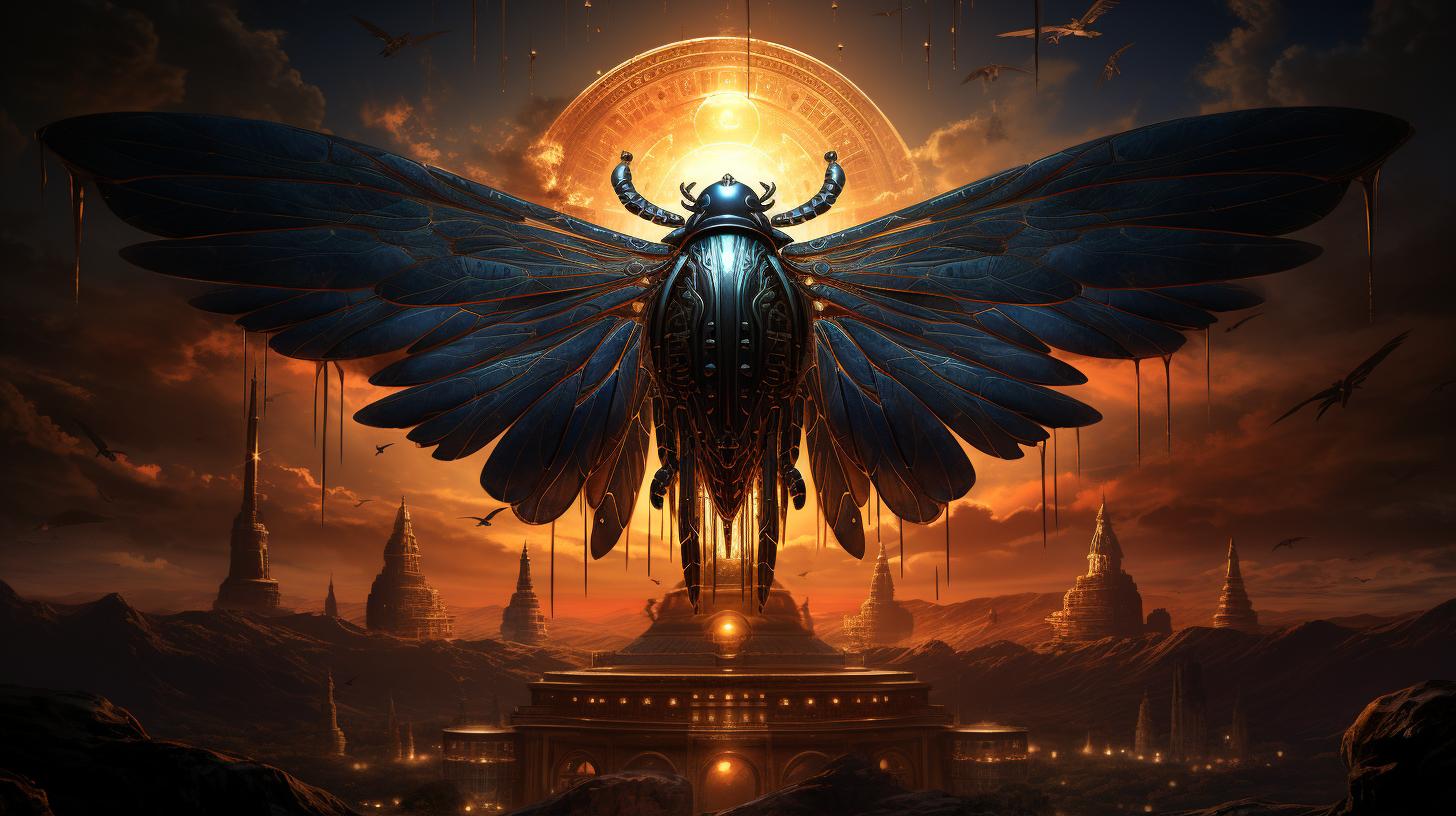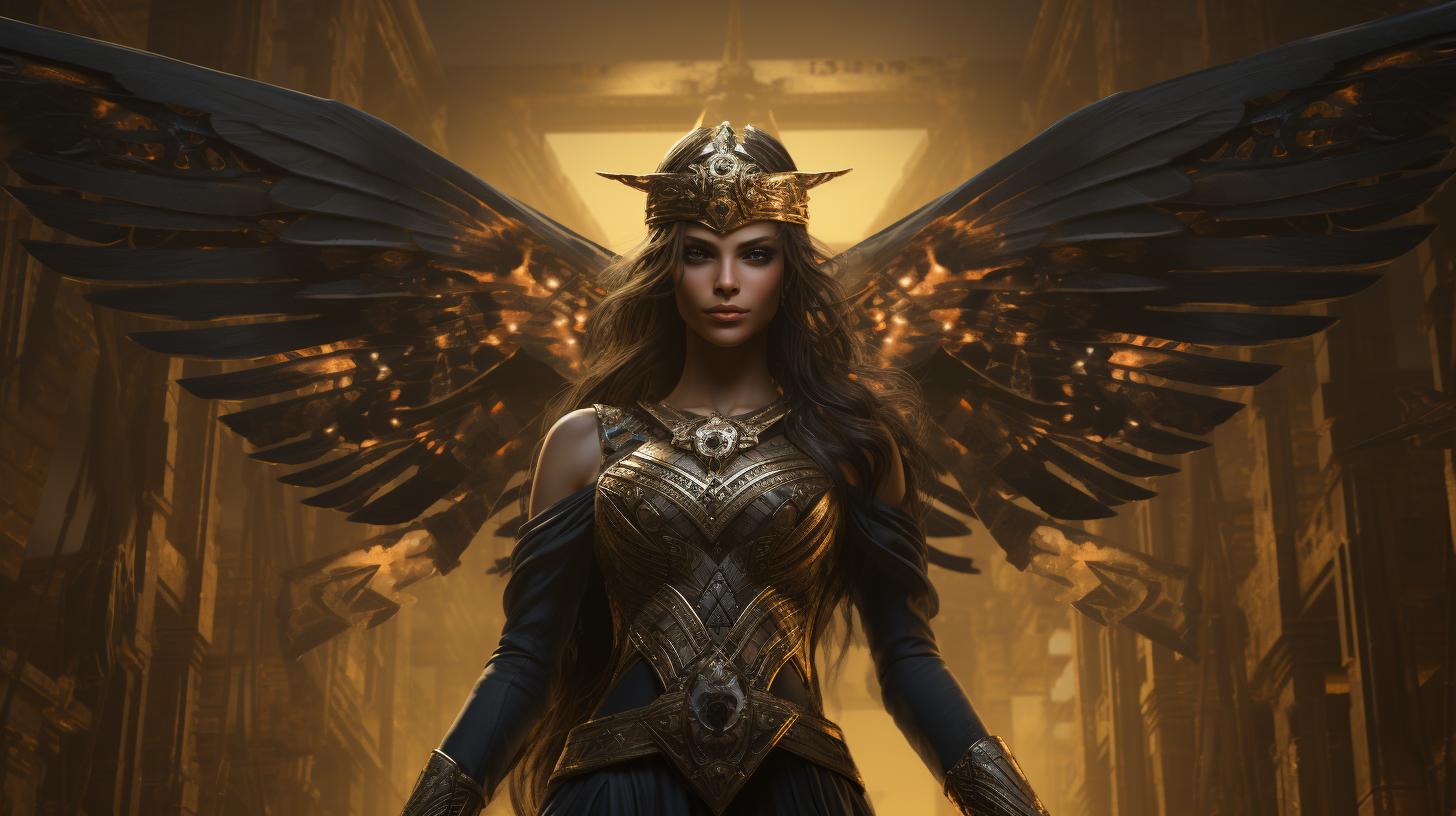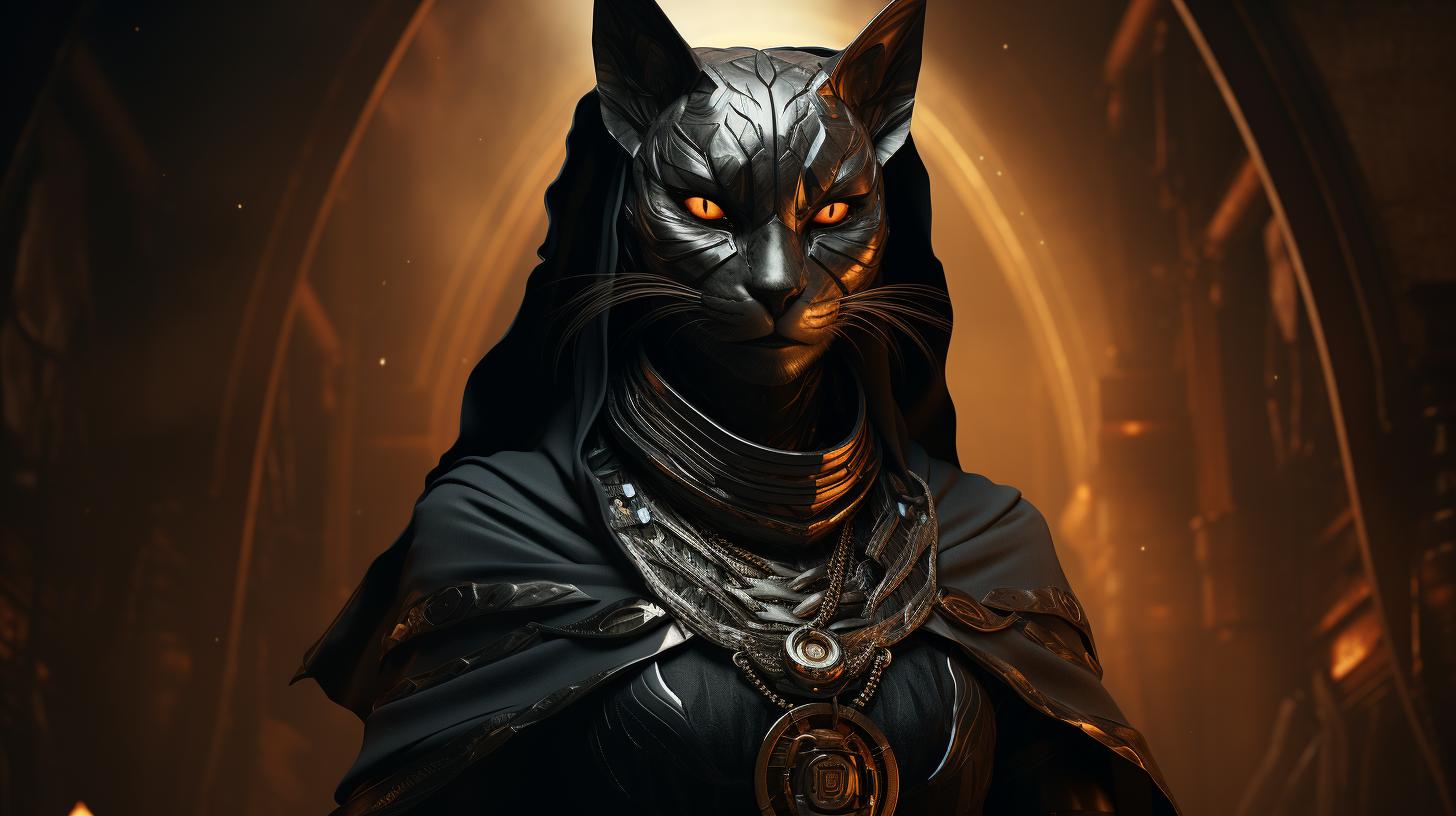Min Egyptian God of Fertility: Ancient Egypt’s Divine Patron
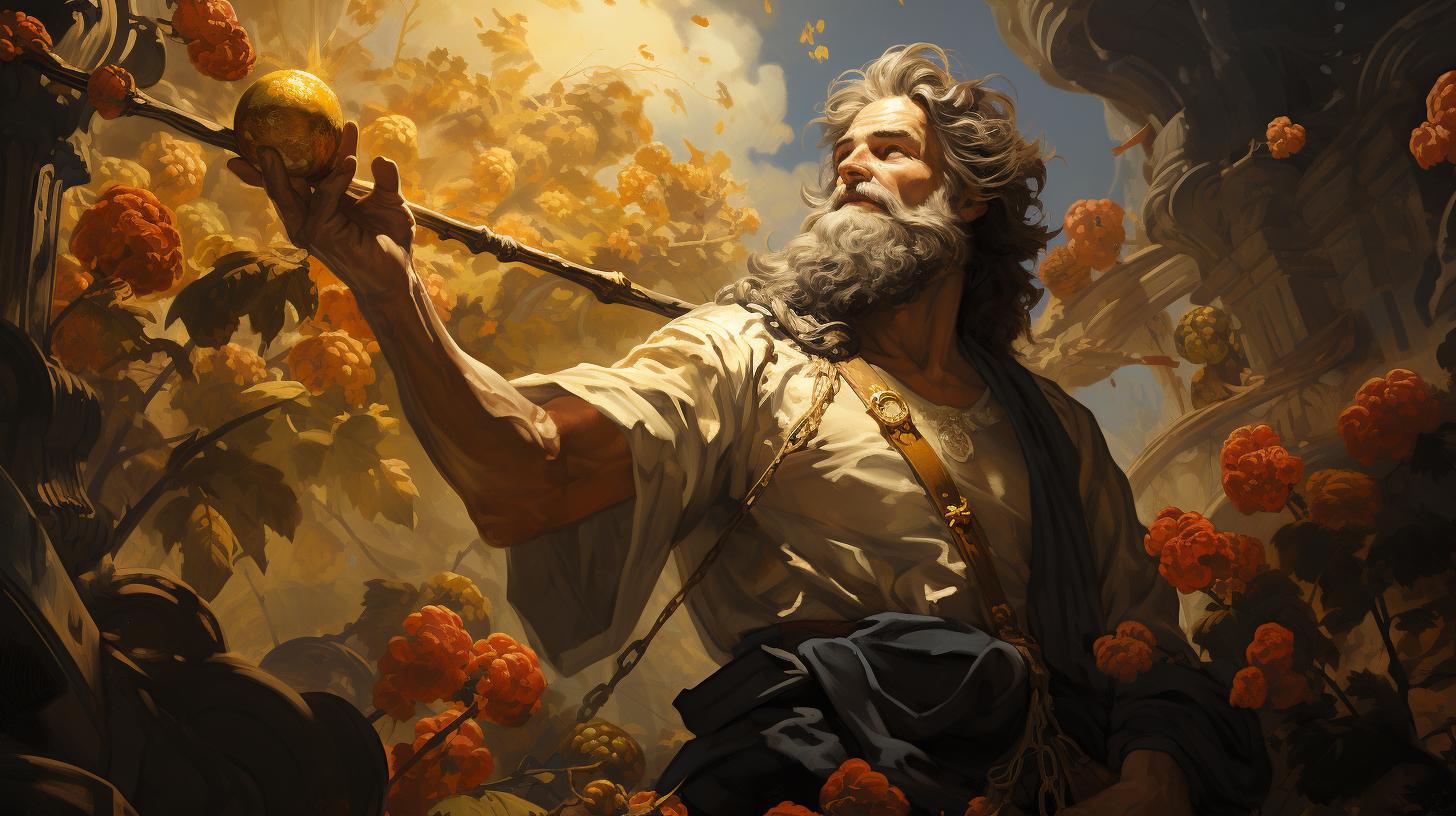
The deity Min, known as the Egyptian god of fertility, held significant reverence in ancient Egypt. This article explores various aspects of Min’s mythology, iconography, and role in Egyptian society.
It delves into the cultural importance of fertility symbolism and examines the connections between Min and other gods like Isis, Osiris, Hathor, and Mut. Additionally, it highlights historical sites, artifacts, and the lasting influence of Min in modern culture.
Enjoy a comprehensive exploration of this fascinating deity and his enduring legacy in Egyptian history.
History of Min Egyptian God of Fertility
Min, the Egyptian god of fertility, holds a significant place in the rich tapestry of ancient Egyptian beliefs and worship. This section delves into the origins, mythology, and cultural significance surrounding Min and the essential role he played in the lives of the ancient Egyptians.
Ancient Egyptian Beliefs and Worship
Ancient Egyptians revered a vast pantheon of deities, each representing different aspects of life and the natural world. Among these gods, Min stood as the embodiment of fertility and procreation. In the complex religious framework of ancient Egypt, fertility held immense importance due to its connection to agricultural abundance and the continuation of society.
Worship of Min centered around both individual and communal religious practices. Individuals sought his guidance and blessings for personal fertility and reproductive success. Additionally, communities conducted elaborate rituals and ceremonies to honor Min and ensure the prosperity of their agricultural endeavors.
Origins and Mythology of Min
The exact origins of Min remain shrouded in mystery, with scholars offering various theories. Some speculate that he may have emerged from prehistoric fertility cults, while others associate him with specific agricultural or nature deities.
Nevertheless, Min’s role as the god of fertility solidified early in Egyptian history and remained prominent throughout the centuries.
Mythologically, Min was often depicted as a virile figure donning the traditional pharaoh’s headdress known as the “atef” crown.
He symbolized male sexual potency and was believed to bless couples with fertility, ensuring the continuation of both human and agricultural life. Egyptians saw Min as the driving force behind the natural world’s ability to flourish and reproduce.
Cultural Significance and Symbolism of Fertility
The concept of fertility held immense cultural significance in ancient Egypt. It represented not only physical reproduction but also the abundance of crops and the vitality of the land. As the god of fertility, Min embodied these ideas and served as a symbol of life’s perpetuation and the prosperity of the kingdom.
Symbolism associated with Min often included imagery of crops, such as fields of tall, ripened grain. The phallus was another commonly used motif, representing the divine power of procreation. These symbols appeared in religious rituals, sacred art, and even everyday objects, emphasizing the fundamental role of fertility in Egyptian society.
Understanding the history, mythology, and cultural significance of Min provides a deeper appreciation for the intricate beliefs and customs of ancient Egyptians. The worship of Min as the god of fertility played a vital role in their daily lives and the prosperity of their civilization.
Depiction and Attributes of Min
Min, the Egyptian god of fertility, was depicted in various forms and had distinct attributes that symbolized his role and significance in ancient Egyptian mythology.
Physical Representation and Iconography
Min was often depicted as a masculine deity with an erect phallus, emphasizing his association with fertility and procreation. He was portrayed as a strong and muscular figure, wearing a white crown adorned with two tall plumes.
The color white represented purity and the desert regions where fertility was essential for agricultural success.
Furthermore, Min’s facial features were often characterized by a wide, confident smile, symbolizing his role as a bringer of joy and abundance.
Artists frequently represented him with black-colored skin, believed to signify his association with the fertile black silt left by the annual flooding of the Nile River.
Role as a God of Fertility
As the god of fertility, Min was believed to have the power to bestow abundance and promote successful reproduction in both humans and animals.
He was regarded as a protector of agricultural lands and was associated with the growth of crops, ensuring bountiful harvests for the Egyptian people.
Min’s role as a fertility deity extended beyond plant life and agriculture.
He was also closely connected to human fertility and the process of reproduction. It was believed that invoking his divine presence and blessings would enhance the chances of conceiving children and ensure their healthy development.
Associated Symbols and Offerings
- One of the primary symbols associated with Min was the lettuce plant, which was considered an aphrodisiac and a symbol of fertility. Offerings of lettuce and other vegetation were made to Min as offerings during religious rituals.
- The bull was another significant symbol associated with Min, representing strength and virility.
It was believed that the strength and fertility of the bull would transfer to the land and its people.
- Other offerings to Min included food items such as bread, honey, and beer, which were seen as essential for sustenance and promoting fertility.
The depictions and symbols associated with Min reflected the vital role he played in the ancient Egyptian pantheon as the god of fertility, ensuring the prosperity and continuation of life in all its forms.
Min’s Role in Ancient Egyptian Society
Min, the Egyptian god of fertility, played a significant role in ancient Egyptian society. He was revered as a powerful deity who held sway over various aspects of life and culture.
This section delves into Min’s multifaceted role, exploring his connection to agriculture, human fertility and reproduction, as well as his influence on Egyptian kingship and pharaohs.
Min as a Protector of Agriculture and Harvest
One of Min’s prominent roles was his association with agriculture and the harvest.
Egyptians heavily relied on the fertility of their land and the success of their crops, and Min was believed to ensure the abundance and prosperity of agricultural activities. As a guardian of fertile lands, Min was called upon by farmers and cultivators to bless their fields, protect their crops from pests and diseases, and grant bountiful harvests.
His presence and blessings were crucial for the sustenance and economic wellbeing of ancient Egyptian society.
Min’s Connection to Human Fertility and Reproduction
Min’s influence extended beyond the realm of agriculture. He was also strongly associated with human fertility and reproduction. Egyptians believed that Min held the power to bless couples with the gift of children and ensure the continuity of their lineage.
Many individuals and couples would seek Min’s favor and support when faced with issues of infertility or difficulties in conceiving. They revered him as the patron of procreation and sought his intercession through offerings, prayers, and rituals aimed at invoking his blessing and assistance.
Min’s Influence on Egyptian Kingship and Pharaohs
Min’s significance in ancient Egyptian society went beyond the religious and agricultural spheres. The god played a crucial role in the institution of kingship and the authority of pharaohs. The pharaoh, often referred to as the “son of the gods,” was believed to possess divine connection and lineage through his association with deities like Min.
As a symbol of fertility, Min’s influence and blessings were sought after for the pharaoh’s wellbeing, his ability to sire heirs, and the prosperity of the kingdom under his rule. Min’s presence in the rituals and ceremonies surrounding the pharaoh solidified his importance as a deity revered by the royal institution and the overall stability of Egyptian civilization.
In conclusion, Min, the Egyptian god of fertility, played a pivotal role in ancient Egyptian society. His association with agriculture, human fertility, and influence on Egyptian kingship showcased the extent of his importance in the cultural, economic, and political fabric of the civilization.
This multifaceted deity held a significant position in the pantheon of Egyptian gods and left an indelible mark on the history and beliefs of ancient Egypt.
Connection between Min and Other Egyptian Gods
Min, the renowned Egyptian god of fertility, holds significant connections with other prominent deities in the Egyptian pantheon.
These connections shed light on the complex interplay between different gods and their roles in the religious and cosmological beliefs of ancient Egypt.
Min’s Relationship with Isis and Osiris
Min shares a deep association with the revered gods Isis and Osiris. As the god of fertility, Min is often depicted alongside Isis, the goddess of motherhood and protector of the pharaoh.
Together, they symbolize the intertwining forces of life and creation. Furthermore, Min’s connection to Osiris, the god of the afterlife and rebirth, highlights the cyclical nature of fertility and regeneration in Egyptian belief.
Min’s Association with Hathor and Mut
Hathor, the goddess of love, beauty, and joy, shares a special relationship with Min. Often depicted as his female counterpart, Hathor complements Min’s role as the god of fertility by representing feminine aspects of creation.
Similarly, Min also has associations with Mut, the mother goddess and consort of Amun-Ra. Their connected symbolism underscores the divine union between masculine and feminine forces in the realm of fertility.
Min’s Role in the Ogdoad Cosmogony
Within the ancient Egyptian cosmogony known as the Ogdoad, Min plays a crucial role as a member of the group of eight primordial deities. The Ogdoad represents the foundational elements of creation, embodying elemental pairs such as male and female, chaos and order.
As part of this cosmological framework, Min’s connection to fertility emphasizes the vital role of procreation in the ongoing balance and perpetuation of the universe.
In conclusion, the connections between Min and other Egyptian gods provide valuable insights into the intricate web of beliefs and symbols associated with fertility in ancient Egypt.
These interconnections reveal the importance of balance, duality, and the cosmic forces of creation within the religious framework of the civilization.
Historical Sites and Artifacts Related to Min
Exploring the historical sites and artifacts associated with Min offers a glimpse into the rich legacy of this Egyptian fertility deity. From revered temples and intricate shrines to stunning statues and reliefs, these remnants provide invaluable insights into the worship and prominence of Min in ancient Egyptian society.
Temples and Shrines Dedicated to Min
The temples and shrines dedicated to Min were important centers of religious worship and served as focal points for fertility rites and rituals. One notable site is the Temple of Min at Koptos, located in Upper Egypt.
This majestic temple featured a grand entrance, courtyards, and sanctuaries dedicated to Min. It served as a place of pilgrimage, where devotees sought blessings for fertility and abundance.
Another significant temple dedicated to Min is the one at Akhmim.
This temple, known as the “House of Min,” was of great importance during the Pharaonic era. It housed statues and sacred objects related to Min, and annual festivals were held to honor the deity and seek his blessings.
Statues and Reliefs Depicting Min
The ancient Egyptians immortalized their beliefs and reverence for Min through statues and reliefs. These art forms depicted Min in various forms and poses, showcasing his association with fertility and masculine strength.
Statues of Min often displayed his iconic erect phallus, symbolizing procreation and vitality.
One remarkable representation of Min is the leonine statue found at the Temple of Karnak in Luxor. This imposing statue portrays Min with the head of a lion, grasping a flail and an ankh, symbolizing his dominion over fertility and life.
Reliefs depicting Min can also be found in various temples and tombs, showcasing the deity’s connection with agricultural abundance and the perpetuation of the Egyptian civilization. These intricately carved scenes offer glimpses into ritualistic ceremonies and celebrations dedicated to Min.
Archaeological Discoveries and Hieroglyphic Inscriptions
Archaeological discoveries and hieroglyphic inscriptions have further deepened our understanding of Min’s significance in ancient Egypt. Excavations have unearthed artifacts such as amulets, offering tables, and votive objects associated with Min.
Hieroglyphic inscriptions found on temple walls and papyrus scrolls provide valuable insights into the rituals, prayers, and myths surrounding Min. They reveal details about offerings made to the deity, rites performed to ensure fertility, and the role of Min in the Egyptian cosmology.
These archaeological discoveries and hieroglyphic inscriptions continue to shed light on the worship of Min, allowing us to appreciate the cultural and religious importance of this powerful Egyptian god of fertility.
Influence and Legacy of Min in Modern Culture
Min, the Egyptian god of fertility, continues to have a significant influence and a lasting legacy in modern culture. From visual arts to literature and film, Min’s representation has captured the imagination of artists and creators, allowing for diverse interpretations and explorations of his divine nature.
Representation of Min in Contemporary Art
In contemporary art, Min’s depiction often emphasizes his role as a symbol of fertility and abundance. Artists draw inspiration from ancient Egyptian iconography, recreating his distinctive physical attributes such as his erect phallus and braided beard.
These artistic renditions serve as a powerful symbol of vitality and the creative forces of nature.
The juxtaposition of ancient symbolism with modern artistic techniques provides a unique perspective on the concept of fertility and its importance in various cultures.
The incorporation of Min’s imagery in contemporary art not only preserves the rich heritage of Egyptian mythology but also explores themes of sexuality, life cycles, and the natural world.
Min’s Inspiration in Literature and Film
The deity’s intriguing persona has inspired numerous works of literature and film.
Writers and authors often draw from the mysterious allure and the deep-rooted symbolism associated with Min to create compelling narratives and explore themes of fertility, desire, and the cyclical nature of life.
From epic tales set in ancient Egypt to modern stories interwoven with elements of mythology, Min’s influence can be seen in the passionate portrayals of characters, the exploration of human relationships, and the quest for vitality and prosperity.
His representation serves as a captivating backdrop to narratives that delve into the complexities of the human experience.
Popular Misconceptions and Modern Interpretations
Despite Min’s significance in ancient Egyptian culture, popular misconceptions sometimes arise when interpreting his role and symbolism. Modern interpretations often emphasize the god’s connection to sexual fertility, as symbolized by his raised phallus.
However, it is crucial to recognize that Min’s domain of fertility extends beyond human reproduction, encompassing agricultural abundance, prosperity, and creative energy.
Contemporary scholars and enthusiasts strive to shed light on the multifaceted nature of Min’s role, challenging oversimplified interpretations that solely focus on his sexual connotations.
By exploring the broader context of ancient Egyptian beliefs and the cultural significance of fertility, a more nuanced understanding of Min’s legacy can be achieved.
In conclusion, Min, the ancient Egyptian god of fertility, has left an indelible mark on modern culture.
Through his representation in contemporary art, literature, and film, Min’s influence continues to captivate and inspire audiences, offering diverse perspectives on the power of fertility and its impact on the human experience.

